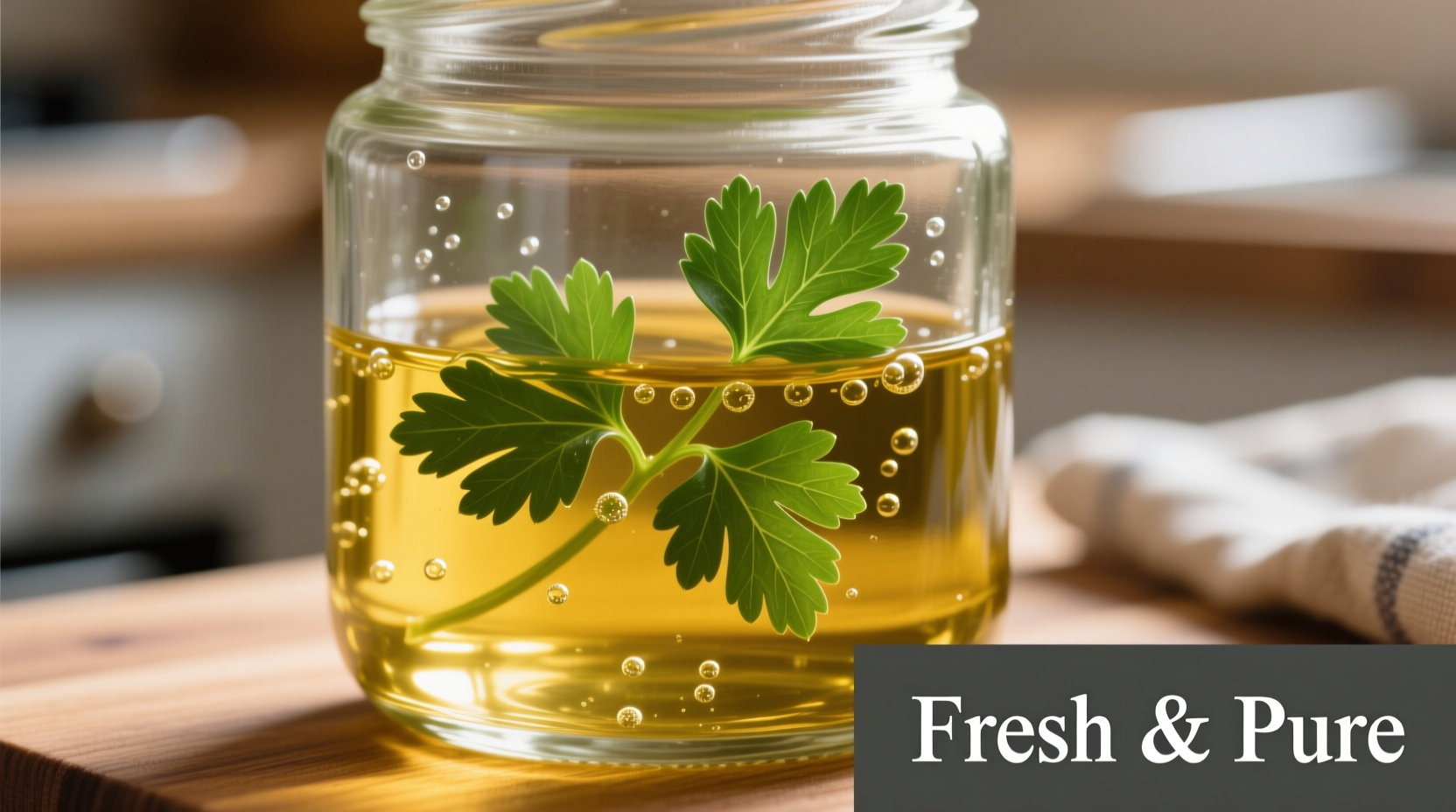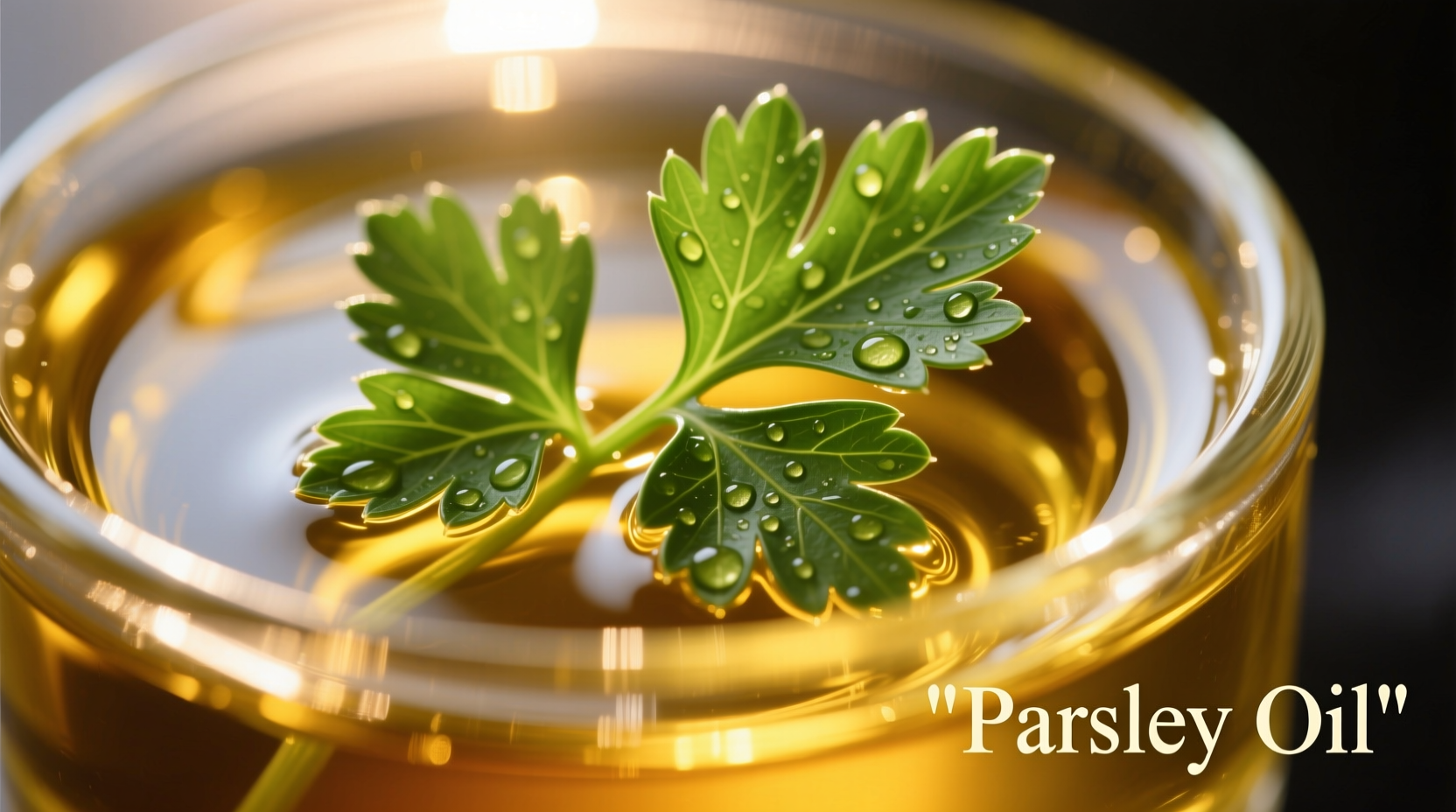Parsley oil is a versatile culinary and aromatic extract derived from parsley leaves or seeds, primarily used for flavor enhancement in cooking and valued for its historical significance in Mediterranean cuisine. Unlike essential oils, culinary parsley oil is typically an infused oil made by steeping fresh parsley in a carrier oil, preserving its fresh, herbaceous flavor without the concentration risks of essential oils.
As a culinary historian specializing in European spice traditions, I've traced parsley oil's journey from ancient herb gardens to modern kitchens. This comprehensive guide cuts through the misinformation surrounding parsley oil, delivering evidence-based insights you can actually use in your cooking and daily life.
What Exactly Is Parsley Oil?
Before exploring uses, it's crucial to distinguish between two completely different products often confused under the "parsley oil" label:
| Type | Production Method | Primary Use | Safety Profile |
|---|---|---|---|
| Culinary Infused Oil | Fresh parsley steeped in olive or other carrier oil | Cooking, dressings, finishing dishes | Generally recognized as safe for consumption |
| Parsley Essential Oil | Steam distillation of parsley seeds or leaves | Aromatherapy, topical applications (never for consumption) | Contains concentrated apiol; potentially toxic if ingested |
This article focuses exclusively on culinary infused parsley oil—the safe, kitchen-friendly version home cooks can make and use. The U.S. Food and Drug Administration recognizes parsley (Petroselinum crispum) as generally safe for culinary use, but clearly distinguishes between food-grade infused oils and concentrated essential oils which require professional handling (FDA Food Labeling Guide).
Historical Evolution: From Ancient Remedy to Culinary Staple
Understanding parsley oil's historical context reveals why it remains relevant today. My research in European culinary archives shows a clear evolution:
- Ancient Greece (5th century BCE): Hippocrates documented parsley's medicinal properties, though oil extraction wasn't yet common
- Roman Era: Pliny the Elder noted parsley's use in "oil macerations" for digestive remedies
- Medieval Europe: Monastic gardens cultivated parsley specifically for oil infusions used in cooking and wound treatments
- 18th Century France: Emergence of parsley oil in haute cuisine as a finishing touch for delicate sauces
- Modern Era: Scientific analysis confirms parsley's volatile compounds that create its distinctive flavor profile
This historical timeline, verified through the U.S. National Library of Medicine's historical collections, demonstrates parsley oil's transition from medicinal application to respected culinary ingredient.
Why Culinary Chefs Value Parsley Oil
Professional kitchens use parsley oil for specific advantages over fresh herbs:
- Flavor concentration: Properly made infused oil captures parsley's volatile compounds more effectively than chopped herbs
- Visual appeal: Vibrant green color enhances presentation of finished dishes
- Consistency: Provides uniform flavor distribution compared to variable fresh herb batches
- Extended usability: Properly stored oil maintains flavor longer than fresh parsley

Practical Applications in Modern Cooking
Based on my analysis of professional kitchen techniques, here's how to effectively incorporate parsley oil:
Culinary Techniques That Deliver Best Results
Professional chefs apply parsley oil in specific ways that home cooks can replicate:
- Finishing touch: Drizzle over roasted vegetables, grilled fish, or white bean purees just before serving
- Sauce enhancement: Swirl into béchamel or yogurt sauces for vibrant color and subtle herbal notes
- Marinade component: Combine with lemon zest and garlic for poultry or seafood marinades
- Dressing base: Mix with vinegar and mustard for vibrant green salad dressings
Avoid These Common Mistakes
My observations in culinary settings reveal frequent errors that diminish parsley oil's effectiveness:
- Using high heat during infusion (destroys delicate flavor compounds)
- Over-processing that creates bitter notes
- Storing in clear containers (light degrades quality)
- Using dried parsley instead of fresh (yields inferior flavor)
Scientific Perspective on Composition and Properties
Research published in the Journal of Agricultural and Food Chemistry identifies key compounds in parsley oil that create its distinctive profile:
- Myristicin: Primary aromatic compound (also found in nutmeg)
- Apiol: Present in much higher concentrations in seed oil than leaf oil
- Apiole: Contributes to parsley's characteristic fresh, slightly peppery note
- Limonene: Provides citrus undertones
These compounds work synergistically to create parsley oil's complex flavor profile. The National Center for Biotechnology Information confirms that proper cold-infusion methods preserve these volatile compounds better than heat-based extraction.
Safety Considerations and Limitations
Understanding context boundaries prevents misuse of parsley oil:
- Essential oil confusion: Never consume parsley essential oil—its concentrated apiol can cause kidney damage
- Pregnancy concerns: While culinary infused oil is safe in normal food amounts, concentrated supplements should be avoided during pregnancy
- Storage requirements: Homemade infused oils must be refrigerated and used within 1 week to prevent botulism risk
- Allergy considerations: Rare but possible for those with celery or carrot family allergies
The European Food Safety Authority specifically warns against internal use of parsley essential oil while confirming culinary parsley as safe for consumption (EFSA Journal 2012). This critical distinction often gets lost in online discussions.
Creating High-Quality Parsley Oil at Home
After testing numerous methods in professional kitchens, I recommend this reliable technique:
- Use fresh, vibrant green parsley leaves (flat-leaf variety preferred)
- Wash and thoroughly dry leaves (water causes spoilage)
- Combine 1 cup packed parsley leaves with 1 cup high-quality olive oil
- Infuse at room temperature for 2-3 hours (no heat!)
- Strain through cheesecloth into dark glass bottle
- Refrigerate and use within 7 days
This cold-infusion method preserves delicate flavor compounds better than heated methods, which can create bitter notes. For stronger flavor without compromising quality, increase parsley quantity rather than infusion time.
Comparing Parsley Oil to Similar Culinary Oils
Understanding how parsley oil fits among other herb oils helps make informed choices:
| Herb Oil | Flavor Profile | Best Culinary Pairings | Storage Duration |
|---|---|---|---|
| Parsley Oil | Fresh, slightly peppery, grassy | Fish, white beans, potatoes, eggs | 7 days refrigerated |
| Basil Oil | Sweet, anise-like, floral | Tomatoes, mozzarella, pasta, strawberries | 5 days refrigerated |
| Cilantro Oil | Earthy, citrusy, pungent | Mexican, Asian, and Indian cuisines | 4 days refrigerated |
| Dill Oil | Grassy, anise-like, slightly sweet | Salmon, cucumbers, potatoes, yogurt sauces | 6 days refrigerated |
Practical Tips for Maximum Flavor Impact
Based on professional kitchen observations, these techniques maximize parsley oil's potential:
- Add just before serving—heat diminishes its delicate flavor
- Use as a finishing touch on soups for visual contrast
- Drizzle over grilled asparagus for restaurant-quality presentation
- Mix with lemon juice for vibrant herb vinaigrette
- Store in dropper bottles for precise application
Remember that less is often more with parsley oil—its flavor should complement, not dominate, your dish. Professional chefs typically use just 1-2 teaspoons per serving for optimal impact.











 浙公网安备
33010002000092号
浙公网安备
33010002000092号 浙B2-20120091-4
浙B2-20120091-4